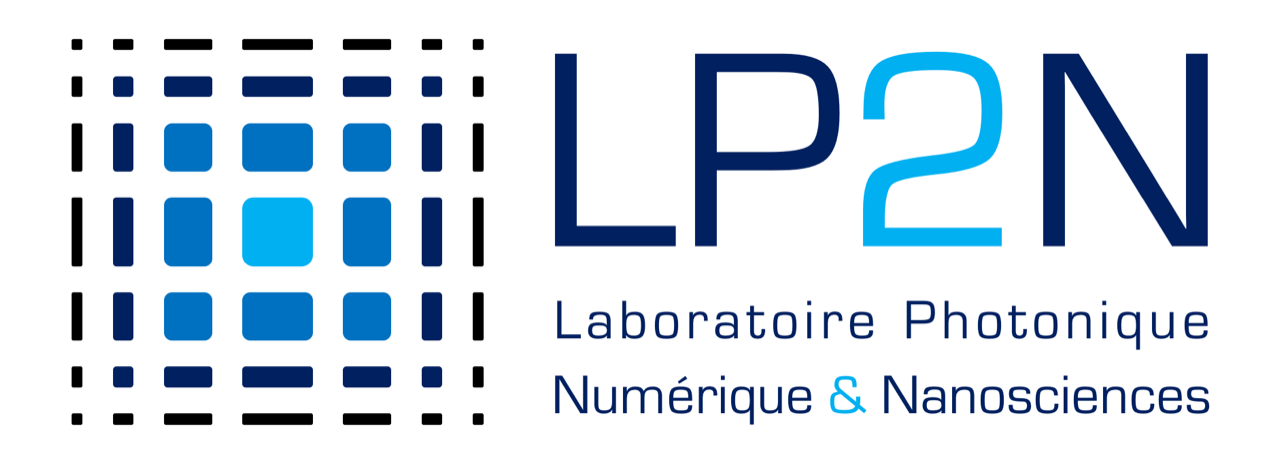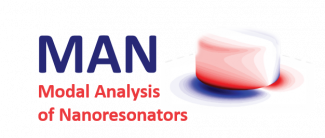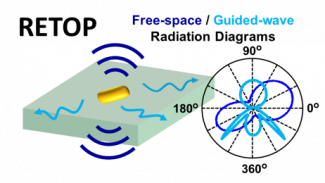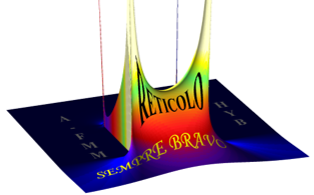Light in Complex Nanostructures
The Light in Complex Nanostructures (acronym COS) group studies the properties of coherent systems involving multiple and strong scattering of light with individual or ensemble of quantum or classical nano-objects or both. We tackle the problem starting from the elementary level (individual nanoresonators), to the microsystem level (nanoresonators possibly dressed by quantum emitters, small nanoresonator assemblies), towards the mesoscopic scale (metasurfaces).
OPEN POSITIONS
The group would be delighted to successfully support the application of a young researcher for a junior (Chargé de Recherche) CNRS position in January 2026.
The group received significant grants in 2023 & 2024 and is presently offering several postdoc positions:
- Within the ERC Advanced project UNSEEN (2.2 M€), we study disordered metasurfaces to synthesize new visual effects. We try to understand how to design morphology and material to control their appearance attributes, such as specular and diffuse colors, glossiness, transparency, iridescence… More details on this new topic are found in Nature Mater. 21, 1035 (2022). Talented PhD students are also welcome.
- In collaboration with ST-Microelectronics (Grenoble), we are developing advanced numerical electromagnetic methods and software tools to analyze large-scale optical metasurfaces. This is a cutting-edge research area with strong industrial relevance and high potential impact.
- For the ANR project WHEEL on Non-Hermitian physics and quasinormal modes, we study the properties of light in time-varying nanoresonators (lasing, bifurcation...).
CURRENT MEMBERS
- Philippe LALANNE (CNRS Research Director, philippe.lalanne@institutoptique.fr, google scholar)
- Louis FORESTIER (ERC PhD, October 2024 - September 2027)
- Miao CHEN (ERC Post-doctoral fellow, google scholar, leftmost, June 2022-24)
- Thomas CHRISTOPOULOS (Marie Curie Post-doctoral fellow, google scholar, November 2024 - October 2026)
- Peng FU (ERC Post-doctoral fellow, Sept. 2025 - August 2027)
- Yuhao XU (ERC Post-doctoral fellow, March 2024 - Feb. 2027)
We are sad: Tong WU and Minggang LUO leave the group We are happy: Peng joins the group
FREEWARES
The group has launched 4 freeware packages: MAN, RETOP,RETICOLO and RETICOLOfilm-stack. A 40min presentation of the packages and their utilities can be found on Youtube. The following graph shows the download statistics of the first three freewares since January 2020 (month 0).
MAN (Modal Analysis of Nanoresonators)
MAN is an open-source software developped in Matlab, designed to analyze electromagnetic resonators. It relies on two solvers, QNMEig and QNMPole, which compute and normalize the quasinormal modes (QNMs) of the resonators. QNMEig operates under the COMSOL Multiphysics platform; QNMPole can be used with any frequency-domain electromagnetic solver. These solvers are valued by an increasing number of toolboxes, which allow a transparent analysis of nanoresonators: field reconstruction in the modal basis, scattering cross-section spectra, LDOS maps, Purcell factor, multipolar decomposition, generation of second-harmonics, temporal domain analysis, Fano parameters (2025) …
Details on the freeware are found in Computer Physics Communications. See also the userguide video or the introduction video.
Download MAN from ZENODO
RETOP
RETOP is an open-source numerical tool developped in Matlab, designed to implement near-to-far-field transformations for light scattering or emission problems involving local inhomogeneities, such as scatterers, current sources, or combination of both, embedded within stratified media. Quite uniquely, RETOP computes in-plane radiation diagrams in guided and plasmonic modes.
To compute radiation diagrams, RETOP just needs to know the near-field computed on a rectangular box that contains the object. This computation can be performed with any full-wave Maxwell solver, including COMSOL. Special attention is made to the interface with COMSOL Multiphysics. In 2024, RETOP was integrated into COMSOL V6.2 (excluding the option related to guided modes).
Download RETOP from ZENODO
RETICOLO
RETICOLO implements the rigorous coupled wave analysis (RCWA) for 1D (classical and conical diffraction) and 2D crossed gratings. It operates under a MATLAB environment and incorporates an efficient and accurate toolbox for visualizing the electromagnetic field in the grating. As a spinoff, V9 and later versions incorporate a toolbox to analyze thin film stacks made of uniform media with arbitrary anisotropy.
Download RETICOLO from Zenodo
RETICOLOfilm-stack
RETICOLOfilm-stack is the latest freeware launched in 2024. It is written in MATLAB. It computes the reflection and transmission of arbitrary stacks of anisotropic thin films in a vectorialized manner for multi wavelengths and incidences. It further allows you to compute the modes, e.g. surface polaritons, waveguide modes, guides or leaky of the stack.
Download RETICOLOfilm-stack from Zenodo
BIOGRAPHY Philippe Lalanne
Philippe Lalanne is a CNRS scientist specialized in the interaction of light with nanostructures. He has developed analytical models and modal methods that have provided deep insights into emblematic nanophotonic phenomena, such as the extraordinary optical transmission through subwavelength holes in metallic films [Nature08]. His work also explained Professor Noda’s pioneering results on photonic-crystal cavities with record quality factors [Nature04,LPR08]. This understanding led him demonstrate the first high-finesse cavities in ridge waveguides [LPR08], a device now known as nanobeam cavities. Among his most influential contributions is his pioneering demonstration, in the 1990s, of metalenses and metagratings based on titanium dioxide nanopillar arrays [JOSAA99,LPR17]. These devices achieved, for the first time, large deviation angles and high numerical apertures, with large efficiencies exceeding 80%. Today, his nanopillar-based design has become a standard in academia and industry. He is currently working on optical disordered metasurfaces to control the appearance of materials [NatMater22].
From 2018 to 2022, he served as director of the CNRS “groupement de recherche” on waves (GdR Ondes), which garthers the French wave-science community, comprising more than 20 laboratories and 10 large industrial groups. In recognition of his contributions, he was awarded the Grand Prix Léon Brillouin by the Société Française d’Optique in 2024. He also received an Advanced ERC Grant in 2023 to investigate the appearance of materials with disordered metasurfaces. Dr. Lalanne is a Fellow of IOP, OPTICA and SPIE.
RECENT TEXTBOOK PUBLICATIONS
The textbook Introduction to Nanophotonics (Oxford Univ. Press 2022) introduces major advances in the field of artificial metallic and dielectric nanostructures. The material is designed for graduate students with a background in physics and electrical engineering.
Introduction to Nanophotonics is more than a treatise on photons ans electrons being lost on tiny islands or in a jungle of nano-structured materials; the authors discuss numerous useful configurations while ensuring the reader does not lose sight of te underlying principles, includind an unprecedentedly clear description of the role of plasmons." Dieter Pohl, University of Basel
You can freely download a PDF version that closely resembles the published version.
ALUMNI
- Tong Wu (Post-doctoral fellow, google scholar, now Assistant Professor at Nankaï Univ.)
- Minggang Luo (Post-doctoral fellow, now JSPS position at Tokyo University)
- Roman Calpe (PhD student, Joensuu Univ.)
- Benjamin ROUSSEAUX (Post-doctoral fellow, now Assistant Professor at Univ. Bourgogne Franche Comte)
- Adrian AGREDA (Post-doctoral fellow, now at ELORPrint Tec, France)
- Marie-Caroline SOLIGNAC (PhD student, now at Saint Gobain Recherche, France)
- Denis ARRIVAULT (CNRS Research Engineer, now at INRIA-Bordeaux, France)
- Maxime BERTRAND (PhD student, now at SharpEye, Paris)
- Armel PITELET (Post-doctoral fellow)
- Kevin VYNCK (CNRS Research Scientist, now at Institut Lumière Matière, Lyon, France)
- Louis BELLANDO (Post-doctoral fellow, now at LOMA, Talence, France)
- Kévin COGNEE (PhD student, now at TNO, Delft)
- Rémi FAGGIANI (PhD student, now at Greenerwave, Paris)
- Alexandre GRAS (PhD student, now at Greenerwave, Paris)
- Wei YAN (Post-doctoral fellow, now at Westlake University, Hangzhou, China)
- Jianji YANG (Post-doctoral fellow, google scholar, now at META, California)
- Xiaorun ZANG (PhD student, now at Tampere University of Technology, Finland)



